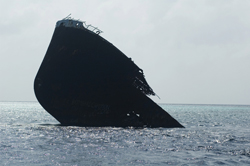Keeping stricken vessels afloat
The 'Surfacing system for ship recovery' (SUSY) project adapted established submarine rescue technology into a system for preserving merchant ships in emergency situations and raising sunken vessels. The work fell into three parts: the development of gas generators, high air-pressure devices and balloons made from high-tech textiles. The internal and salvage modes of deployment were tested in sea trials. The internal mode employed balloons installed in protective covers within the double-bottomed test compartment and were inflated until repairs were carried out. The second mode used external balloons and gas generator packs were attached to enable the test compartment to be recovered at the surface. The gas generator pack has been patented. Additional project outcomes included the development of a time-domain model of ship damage propagation under wave loading that helps in risk-based ship design and accident investigation. Researchers also developed a hydrodynamic model for controlling the raising of sunken ships. Nearly 1 000 cases of past ship disasters were reviewed according to the type of ship and incident. The findings were used to test disaster scenarios for different types of vessels and supported the work of salvage teams operating on sunken vessels. A platform was also created for studying the results under real sea conditions. When that was not possible, scenarios were studied using computer simulations. The SUSY system will help avoid loss of life by preventing further structural damage or sinking of ships long enough to allow them to be evacuated. Money will also be saved by avoiding the loss of ships and cargos and preventing pollution from materials being spilled into the sea. Results will be applied to the global maritime industry so that countries not directly involved in the project can also benefit.







